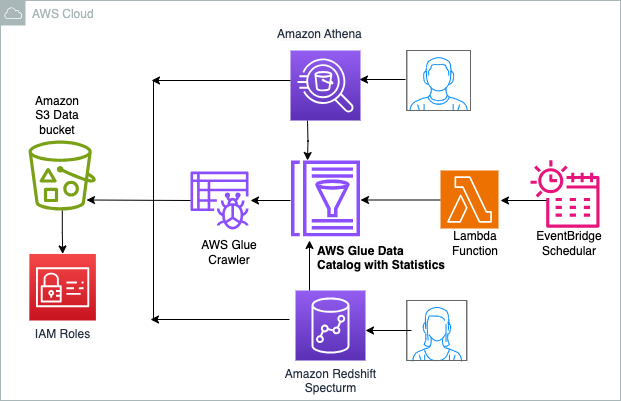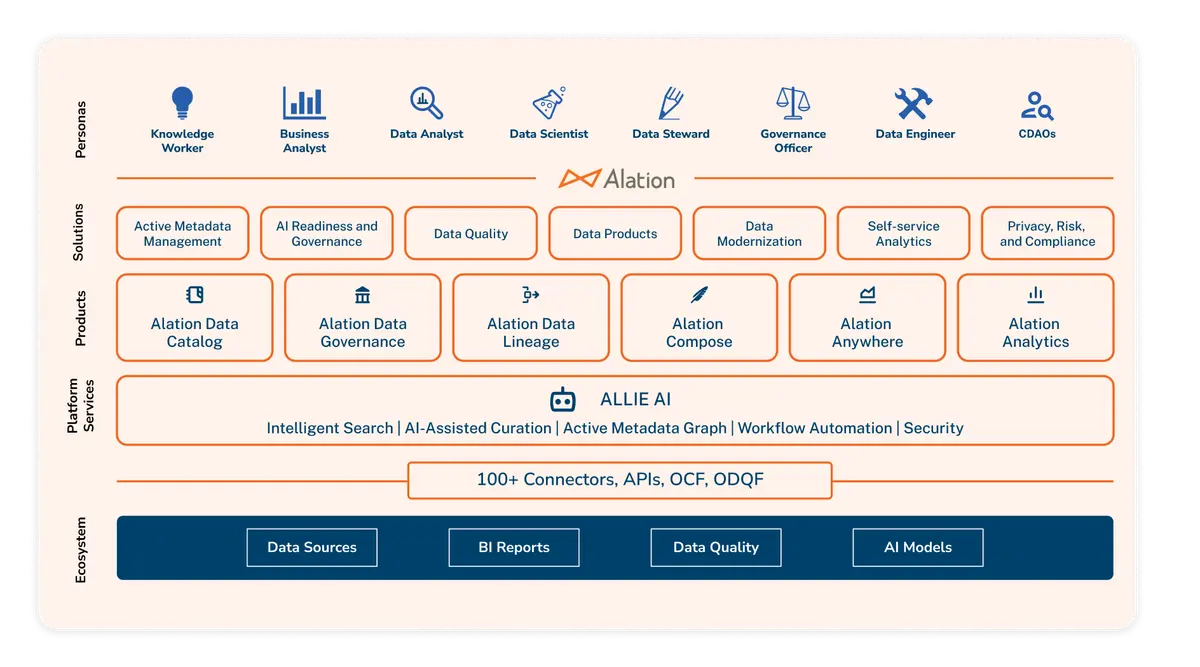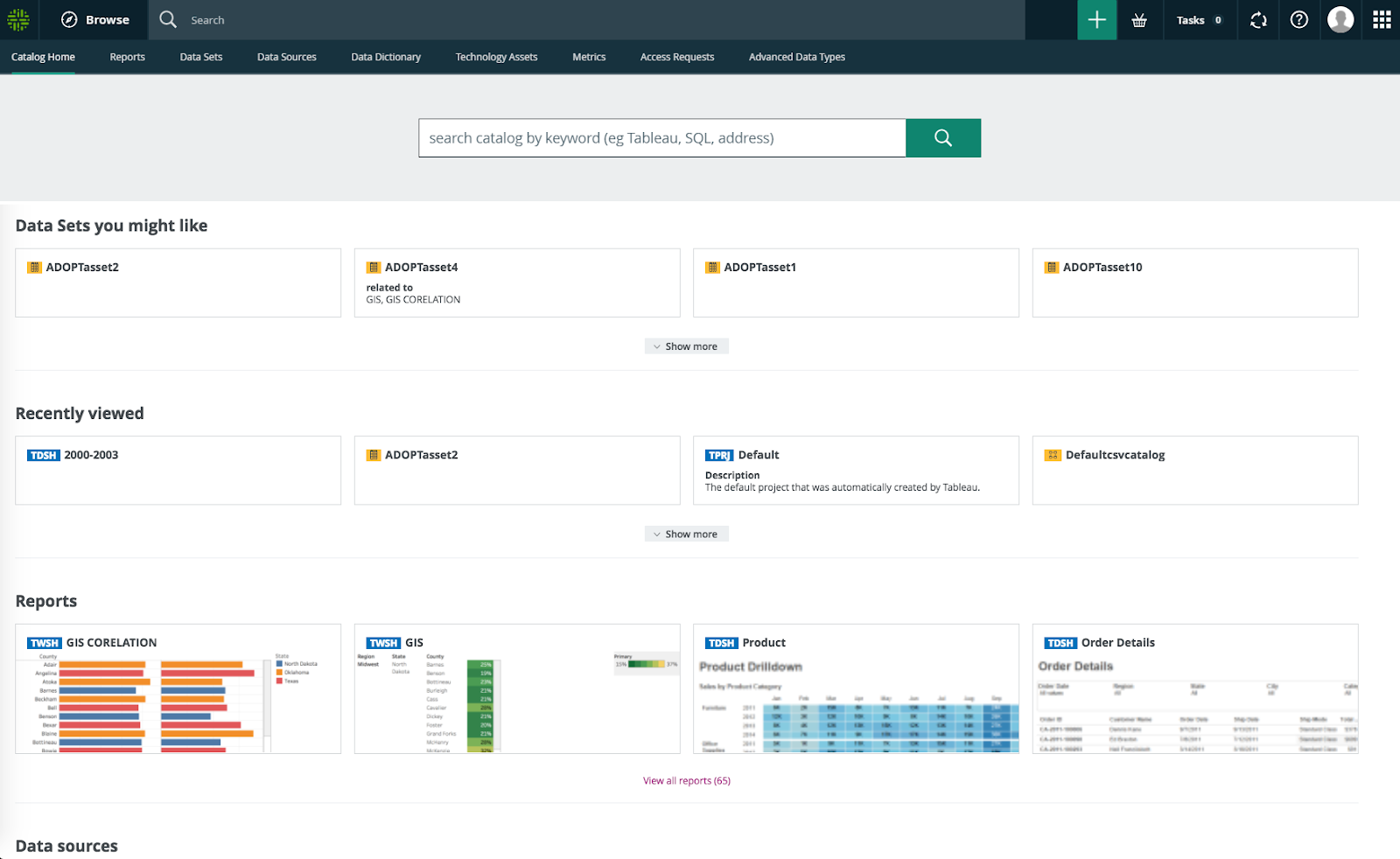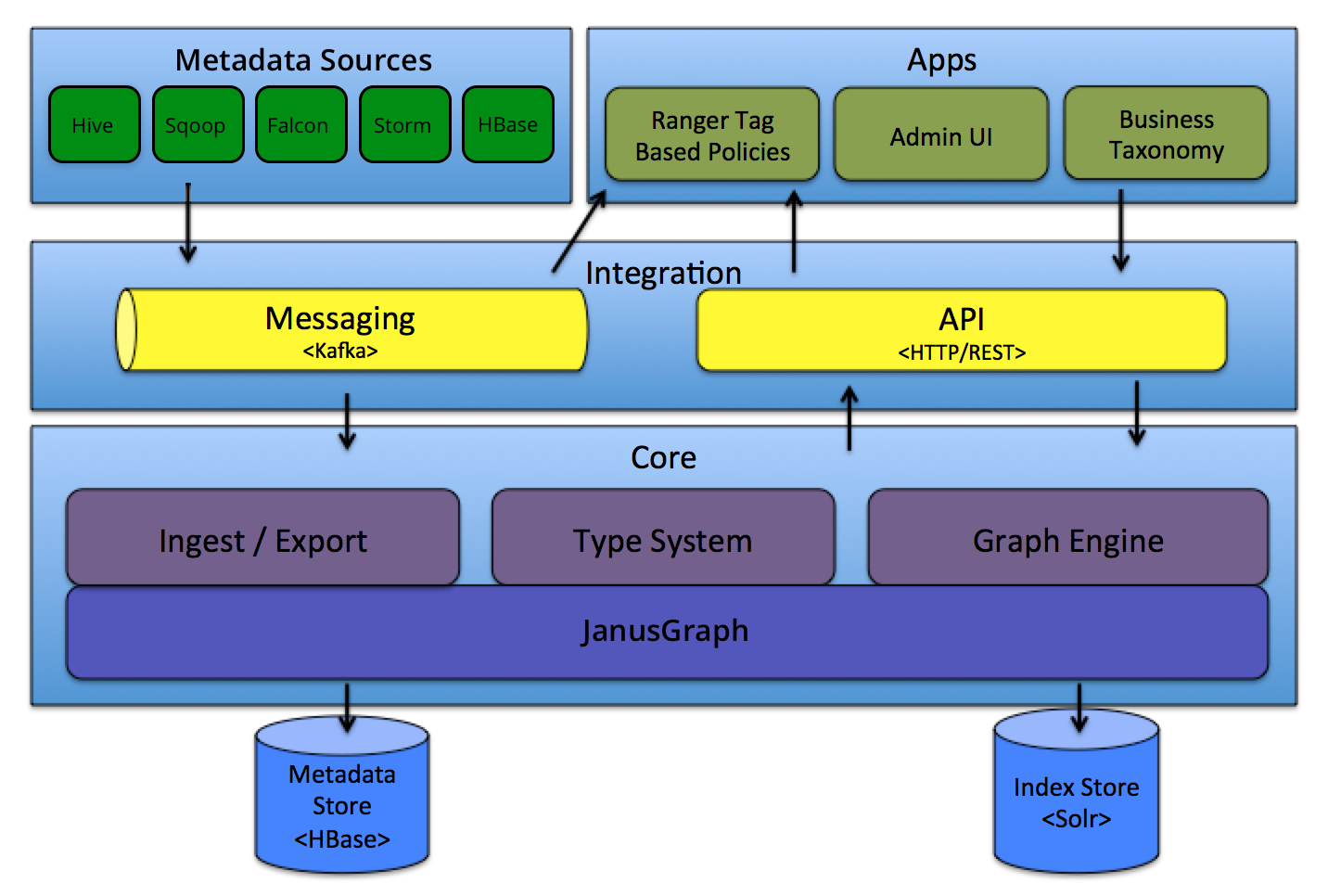Track
Imagine you walk into a bookstore where books are scattered everywhere with no labels… You’d waste time searching and might even miss what you need.
Now, think of a well-organized bookstore with clear sections, book summaries, and author details. You’d quickly find the exact book you're looking for.
That’s the essence of a data catalog.
It’s like a well-organized library for all your company’s data. It organizes, labels, and provides details for all data assets, which makes them easier to find and understand – this is particularly important for businesses that produce lots of data.
In this article, I will provide an in-depth guide to data catalogs. Specifically, I will touch on:
- What is a data catalog?
- Features of a data catalog
- How data catalogs work
- Use cases for data catalogs
- Popular data catalog tools
- Best practices for implementing a data catalog
Let’s get into it!
What is a Data Catalog?
A data catalog is essentially a centralized inventory that stores metadata – information about data – related to an organization's data assets. These assets include:
- Datasets
- Tables
- Databases
- Files from various data sources
The primary purpose of a data catalog is to provide visibility into an organization’s data. Why? Greater visibility makes it easier for users to find, understand, and use data efficiently.
Thus, by organizing metadata, a data catalog helps streamline data discovery, support data governance initiatives, and enhance collaboration between data teams.
Features of a Data Catalog
A data catalog typically offers several key features, all designed to improve the usability and governance of data within an organization.
Here are a few of the most common.
Metadata management
One of the core functions of a data catalog is managing metadata. Metadata provides descriptive details about data assets (e.g., source, structure, business context, etc.).
It answers key questions like:
- “Where does the data come from?”
- “What does this data represent?”
- “How can this data be used?”
This makes it easier for users to understand the relevance and quality of the data quickly.
Data discovery and search
Data catalogs simplify data discovery by offering robust search functionalities. What this means is users can quickly find relevant datasets based on keywords, tags, filters, or business terms.
If you work at a large organization with thousands of datasets, this functionality is a godsend as it significantly reduces the time spent on data exploration.
Data lineage
Data lineage tracks the flow of data through various systems. With a data catalog, users can trace the origin of a dataset, understand how it has evolved, and identify any potential issues with its integrity. This feature is essential to ensure trust in the data and is a key component of governance and compliance efforts.
Data classification and tagging
Classification and tagging features allow organizations to categorize data based on different properties. These tags provide context to the data. Context makes it easier to group related assets and streamline data discovery.
Collaboration features
Modern data catalogs transform how data teams work together. Instead of operating in silos, team members can easily share insights and feedback in real-time. They can comment directly on datasets, flag important details, and rate data quality, which transforms the catalog into a dynamic hub of information.
This approach boosts transparency – everyone knows which data is reliable and why. Adding notes and assigning quality scores forms the basis of what becomes a living document that tracks the journey of the data.
Data governance support
A data catalog drives data governance by actively enforcing the rules that keep data secure and well-managed. How? It clearly defines:
- Who owns each dataset
- Who has access
- What the usage guidelines are
This structure empowers organizations to stay in control of their data, ensure that it is used responsibly, and comply with regulations.
How Does a Data Catalog Work?
The best way to understand how data catalogs work is to think of your organization's data like a bustling airport. You’ve got planes (data) constantly arriving, departing, and connecting.
Air traffic control towers at airports are responsible for the safe and efficient management of air traffic – chaos would reign if they were not in place.
Your data catalog acts as that control tower. How so? It maps every route, tracks every flight’s journey, and overall, ensures everything runs smoothly. It also collects details about every plane’s origin, destination, and the stops it takes along the way.
But that’s just a general overview…
In this section, we will cover the inner workings of how a data catalog functions, which will help you better conceptualize its operations.
Collecting metadata
Data catalogs are like detectives gathering insights into a case; they collect clues from every corner to help solve it. In the case of a data catalog, however, these clues are metadata.
In other words, data catalogs collect metadata from a variety of sources. This could be a database, data lake, cloud storage, and other data repositories. Automated processes act like the detective’s tools, pinpointing where the data came from, how it’s structured, and its purpose.
Like a detective constantly collecting clues to update insights about a case, a data catalog continuously updates itself to ensure your team always has the freshest and most accurate information to crack the code of your data needs.
Indexing and organizing data
Once the detective gathers the clues, they don’t just toss them into a pile – they organize everything meticulously. The data catalog does the same; it indexes the metadata, meaning it sorts key attributes like type, source, and tags.
This is akin to creating a case file where every clue has its place, like in the movies, where the detectives have all the clues on a wall linked together. Indexing and organizing the data makes it much easier for the team to connect the dots. Namely, it helps users navigate the data landscape and find exactly what they need quickly.
User interaction with the data catalog
Unless James Bond is handling the case, detectives rarely keep the case file for themselves. Instead, they document and share them in centralized systems so others can help solve the puzzle.
Once again, the data catalog works in a similar way. It provides an intuitive interface that anyone can use to search for datasets, uncover the story behind the data, and explore its metadata.
Advanced filters, sleek dashboards, and customizable views make the experience effortless, empowering every user to become a data detective—even if they lack technical expertise.
Use Cases for Data Catalogs
Data catalogs are versatile tools that serve a wide range of purposes across organizations. For example, they help organizations improve data quality. However, they can also help organizations enforce governance policies and help data scientists find the right datasets.
Let’s explore some practical scenarios where data catalogs make a significant impact.
Data discovery for data scientists and analysts
A data scientist building a customer churn predictive model may use the data catalog to quickly find historical customer data, sales transactions, and engagement metrics to feed to their system. Instead of hunting through multiple databases, they use the catalog’s search filters to locate the most relevant datasets in minutes, speeding up their analysis and model-building process.
Supporting data governance initiatives
A data steward may check into the data catalog to track who owns each dataset and what access permissions are in place. Reviewing the metadata allows them to ensure that only authorized users access sensitive data, which helps to enforce compliance with internal policies and regulations.
Improving data quality management
Let’s say a data analyst notices discrepancies in customer data while reviewing a sales report... Using the data catalog, they can trace the dataset’s lineage, identify where the data quality issue originated, and quickly fix it to ensure accurate and reliable data for future reports.
Popular Data Catalog Tools
We’ve established that data catalog tools assist organizations in managing, organizing, and discovering their data assets. They achieve this by building an inventory of these assets and capturing relevant metadata.
But where do you get started with data catalogs? In this section, we will explore some of the most popular data catalog tools that are making an impact in the industry.
AWS Glue Data Catalog

Example data architecture using Glue Data Catalog. Image source: AWS
AWS Glue Data Catalog is a fully managed, serverless data catalog that serves as the central repository for all your metadata. It integrates with other AWS services like Amazon Redshift, Amazon S3, and AWS Athena.
It helps users quickly find and access their datasets by automatically discovering and categorizing metadata from their data sources. Note that the Glue Data Catalog also supports data governance and security.
Alation

The Alation ecosystem and where the data catalog solution fits. Image source: Alation.
Alation is an AI-powered data catalog that helps organizations improve data discovery and governance. It leverages powerful machine learning algorithms to automatically index, classify, and curate metadata, making it easier for users to find relevant datasets.
Alation's collaborative features, such as the ability to ask questions, tag data, and create discussions, encourage teamwork between data teams and business users. Another beneficial feature is its detailed data lineage tracking. This helps organizations understand the context of their data and ensure its quality and compliance.
Collibra

The Collibra data catalog user interface. Image source: Collibra
Collibra’s catalog features automated data discovery, metadata curation, and data stewardship capabilities. It also provides tools for tracking data lineage and managing compliance requirements. Collibra ensures that data governance processes are maintained throughout the organization by fostering collaboration between data professionals and business users. It also integrates with various data sources and platforms, making it adaptable to diverse data ecosystems.
Apache Atlas

Apache Atlas high-level architecture overview. Image source: Apache Atlas
Apache Atlas is an open-source data governance and metadata management tool that helps organizations manage their data assets across complex environments, especially within Hadoop ecosystems. It provides users with a unified framework to manage metadata, lineage, and data governance.
Namely, Atlas allows organizations to define custom types and relationships for their data, which enables better tracking and management of data flows. Additionally, Atlas’ rich set of APIs and integration capabilities means it can be customized to meet the specific needs of large enterprises, thus ensuring compliance and facilitating data-driven decision-making.
Best Practices for Implementing a Data Catalog
To fully realize the benefits of a data catalog, organizations must follow best practices that ensure effective adoption and use. In this section, we’ll explore key strategies for successfully implementing and maintaining a data catalog in your organization.
Start with clear objectives
You wouldn’t set out on a road trip without a destination, would you? Of course not. So don’t do it with a data catalog. Sure, you may end up somewhere interesting, but it’s not likely to be where you want to go. If you don’t have a clear objective for your data catalog, you’re navigating blindly - and this is a recipe for disaster.
Remember: a data catalog is a tool. The job of tools is to help you serve your needs more efficiently. If you’re unclear on your needs, you won’t get the best use of your tool.
Focus on user adoption
A data catalog is way too expensive to gather dust in the corner because nobody really knows how to use it. But this happens more often than one might think. If users don’t adopt the tool, it’s as good as useless.
To make the most out of your data catalog, you need to focus on getting everyone on board. Train your team, show them the catalog’s value, and ensure it’s integrated into their daily workflows.
Regularly update and maintain metadata
Metadata must be kept up-to-date to maintain the usefulness of a data catalog. If you don’t regularly update and maintain it, it becomes outdated and unreliable, rendering your data catalog ineffective. Think of it like maintaining a car. You wouldn’t drive around in a vehicle without regular tune-ups and oil changes, would you? The same applies to metadata.
Involve stakeholders in the process
Building a successful data catalog isn’t a solo effort. Engaging stakeholders from all areas of your organization is crucial to ensuring the catalog meets the needs of everyone involved. Engaging all stakeholders from the start ensures the catalog reflects the specific needs of each group within your organization.
Conclusion
A data catalog is an organization's secret weapon in its quest for data clarity, efficiency, and insight. It's like a GPS in the sense that it guides you directly to the information you need, exactly when you need it, minus all the guesswork. But just like any other powerful tool, its success hinges on how it’s deployed.
If you start with clear objectives, get the entire team on board, keep the data fresh, and involve stakeholders from the beginning, your data catalog will serve as a repository of insight.
Remember, the goal isn’t just to collect data; it’s to unlock its full potential – and if you follow the best practices shared in this article, your data catalog will help you achieve this objective.
To continue your learning, I recommend checking out the following resources:
Master Data Governance Today
FAQs
How does a data catalog differ from a data dictionary?
A data dictionary defines individual data elements, while a data catalog provides a broader, searchable inventory of datasets, including metadata, lineage, and ownership.
Can small businesses benefit from using a data catalog?
Yes, even small businesses can improve efficiency and collaboration by using lightweight or open-source data catalog solutions to manage their growing data assets.
Is a data catalog the same as a metadata repository?
Not exactly. A data catalog includes a metadata repository but also layers on search, lineage tracking, collaboration tools, and governance features.
How do AI and machine learning improve data catalogs?
AI enhances data catalogs by automating metadata classification, detecting relationships between datasets, and recommending relevant data assets to users.
What role does a data catalog play in data security?
It helps enforce access controls and visibility rules, ensuring that only authorized users can view or modify sensitive data—supporting compliance efforts.
How long does it take to implement a data catalog?
Implementation time varies based on complexity and tool choice, but most organizations see initial deployment within 4–12 weeks, with gradual scaling afterward.
What industries most commonly use data catalogs?
Finance, healthcare, retail, tech, and government agencies often use data catalogs to support compliance, analytics, and large-scale data operations.
Do data catalogs work with cloud-based data platforms?
Yes. Most modern catalogs integrate seamlessly with cloud platforms like AWS, Azure, and Google Cloud, supporting hybrid and multi-cloud environments.
How can you measure the ROI of a data catalog?
ROI can be measured through time saved on data discovery, improved data quality, faster project delivery, and reduced compliance risks.
What certifications or training are available for data catalog tools?
Many vendors offer training programs, and general data governance certifications (e.g., from DAMA or DCAM) often include catalog usage as part of the curriculum.
